Sept. 4, 2022:

Although we awoke to rain the morning of Sept. 4, 2022, we had an hour’s drive to Ayrshire where we spent our prime objective for the day was an exploration of the childhood home and museum dedicated to Scotland’s unofficial poet laureate, Robert Burns. By the time we reached the town of Alloway, the birthplace of “Rabbie” Burns, the sun was shining. We went first to the farm where Burns was born and raised.
Robert Burns’ father had been the head gardener to a Jacobite lord in the Highlands who lost everything after the Battle of Culloden. At that time, Burns’ father moved to Ayrshire and got a job tending the gardens at the Dunholme estate. Father Burns was able to get a 7 acre plot, and started a farm. They bore four children, of whom Robert was the oldest. Rabbie Burns was born in 1759, and died in 1796, aged 37. When the Burns family first started out in Alloway, there was a village school attended by young Rabbie. However, the school later closed, but Burns’ father enticed a tutor to come to Alloway to teach the children. What the tutor wasn’t told was that the children on neighboring farms were also invited to study with the Burns children, so the tutor ultimately ended up teaching 12 for the price of four. Notwithstanding, the tutor became a close family friend, and he helped guide Rabbie’s literary career. Robert Burns was considered one of the first of the Romantic poets, but he was also a novelist, a composer, and a commentator on the shortcomings in Scottish society. The poets Keats and Tennyson were greatly influenced by his writings.
It would be hard to overestimate the importance Robert Burns holds among Scotland’s people. In a survey taken in 2009, Scottish citizens were polled, and Robert Burns was selected as the most influential Scotsman ever. Part of Burns’ appeal was that he wrote in the Scottish dialect of the English language, which included some Celtic words for English ones. His readers throughout Scotland, who included many common men, found his writings very approachable, and his liberal political views were surprisingly frank and supportive of the working classes. He also wrote about many mundane, everyday topics, such as his “Address to a Haggis”, which celebrated this lowly foodstuff. Today, every January 25th, Scotland celebrates “Burns Night” in honor of his birthday, and the eating of haggis washed down with whisky is a mandatory activity.

We started our tour in Alloway with a visit to the Burns’ family farmstead, which was a modest building, only three rooms large. One of the rooms was where the farm animals lived, and farm chores were performed. The walls of this room are painted with Burns’ odes to the pastoral life. We stood on the threshing floor, which had a gate between threshing room and animal byre. This is where the word “threshold” came from.




The house relied, in part, on the heat from the animals to keep it warm, just like the black houses we saw in the islands. Robert was the oldest of the Burns’ siblings, and when he started school, there was a small school down by River Doon that he attended. However, the school closed soon, so he got a tutor, who ended up teaching 12 kids, from all the nearby farms. The tutor became a friend of the family, and greatly encouraged Robert Burns’ writing career. We saw a sample of a teaching aid called a horn book, on which were printed the alphabet and other things the children needed to learn by rote. One of the notable features in the house was the tiny bed spaces. In Burns’ time, people started building small beds, because there was a TB epidemic, which led people to believe that sleeping sitting up prevented it. In the family’s time in the house, it was heated only by the animals. After the last of the Burns family left, the house briefly became an inn later. The fireplace was added then.
Abraham Lincoln was a huge fan of Robert Burns, because both had been born in dirt-floored cottages, but became educated and bettered their societal standing while still remembering their humble roots, and the inequities of society. Lincoln intended to visit the Burns’ cottage as soon as his presidency was over, but did not make it before he was assassinated. His widow, Mary Todd Lincoln, visited three years after his death.

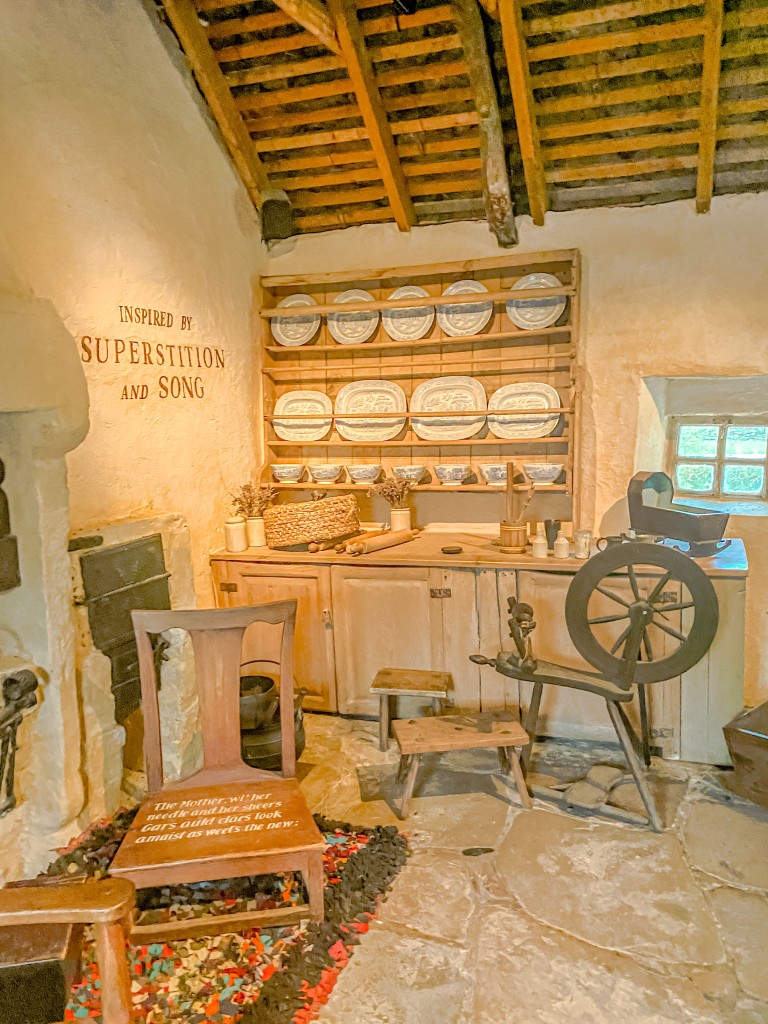

We walked out of the house and down a wooded park area populated with statues commemorating some of Burns’ poems. We walked along the Poet’s Path, which featured a statue of a haggis, a statue of a mouse, and statues of two dogs. Burns’ poetry was so well regarded that even Keats and Tennyson looked up to him, but his writing didn’t pay his bills. Instead, he and his wife, Jean, moved to Dumfries, and Burns made a living as an excise officer. To give you an idea why this was a lucrative move, Burns made 50 pounds per year, when a farmer of the time only made 5 pounds. He needed the extra income because he and wife had nine kids, although only 3 survived to adulthood.

Robert Burns wrote often about the Alloway village church (the “Auld Kirk”),
and the bridge over the River Doon (“Brig’ o’ Doon”). We walked through the ruins of the Auld Kirk. In fact, one of his most famous poems, “Tam O’Shanter” was set here. Ghost stories were a big thing in 18th century, and Burns wrote about a local man, Tam O’Shanter, who gets royally drunk one night. On his way home from the pub, he spies a light in the Auld Kirk, and sees witches and warlocks cavorting in there. A young comely witch, who was very evil, gave chase. Tam rode his trusty steed, Meg, at breakneck speed over the bridge over the River Doon. For some reason, witches couldn’t go past the keystone on a bridge over a running stream. Tam and steed made it across, but the witch caught the horse’s tail, and ripped it off; resulting in the cautionary moral of the poem that you may lose your tail when you get drunk and venture out late at night.



The Haggis sculpture on the Poet’s Path




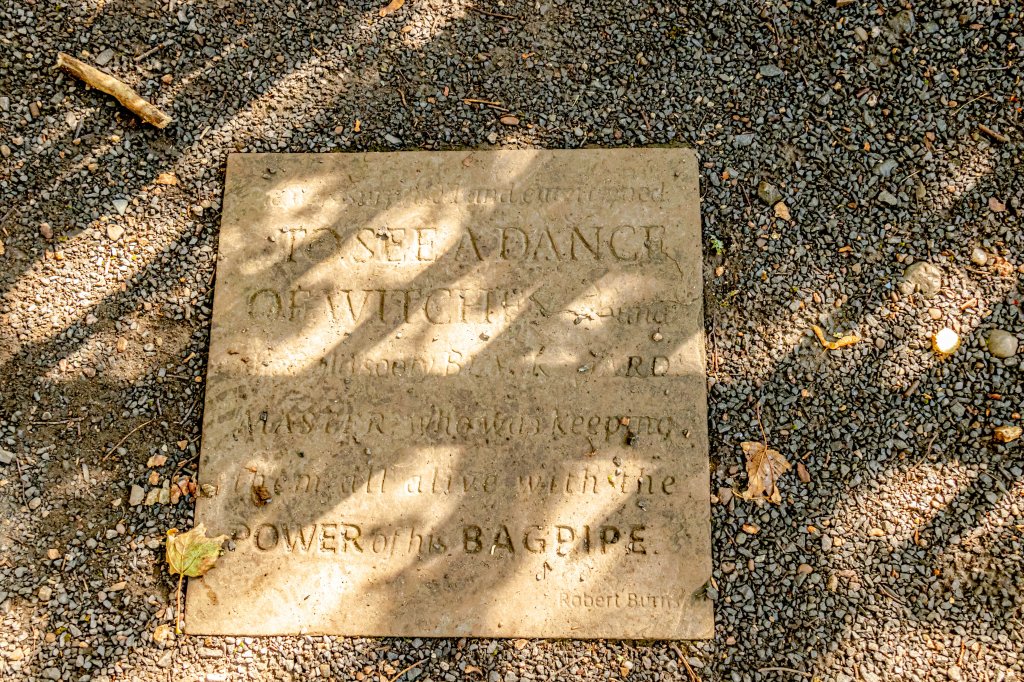




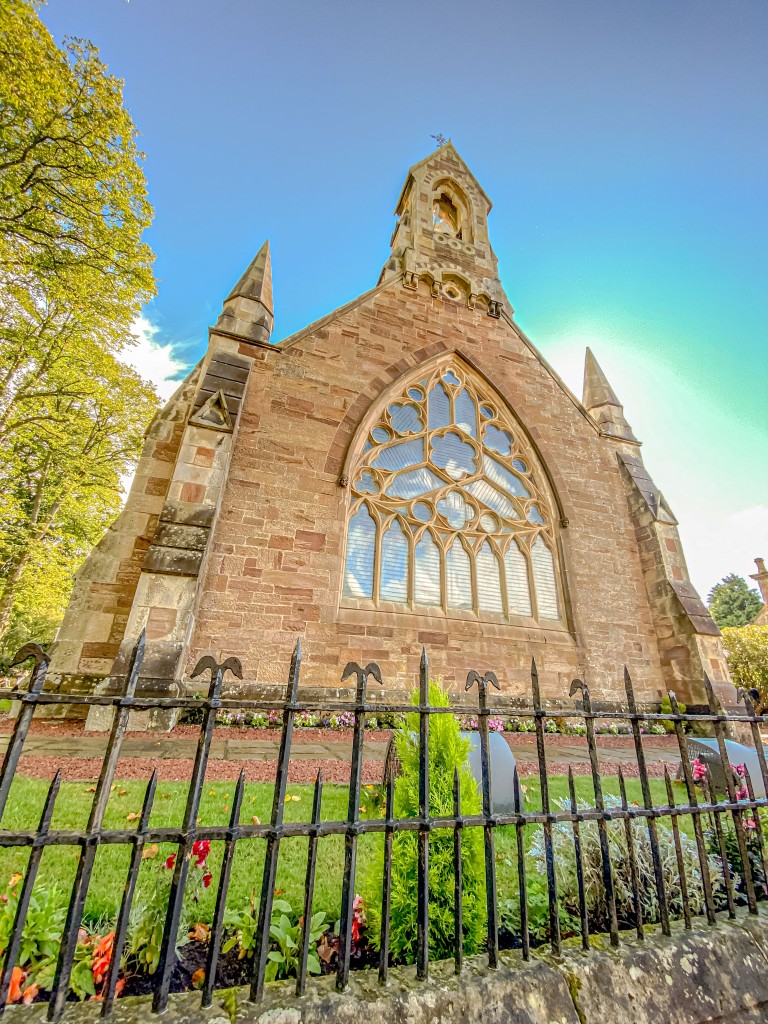
Of course, after that tale, we had to see the Brig O’Doon! It was a thing of beauty with its high arch, but I can’t imagine riding a horse (or carriage) over it on an icy night! Fittingly, right across from the bridge is the Burns Memorial Park. Although Burns is actually buried in Dumfries, where he died at age 37, there is a lovely monument here to him, and a museum which commemorates his life and contributions to Scottish society. Burns was many things—a political commentator, farmer, poet, balladeer, historian, and womanizer. In addition to his nine children born in wedlock, he had three more children out of wedlock. Two of his children were born within aa few months of each other by different mothers. He even tried to leave his wife for another woman, and move to Jamaica to be a bookkeeper at a plantation, but lacked the money for the ship fare. One of his famous poems, “Ae Fond Kiss”, was written about his great love for the lady, “Clarinda”, who was really a married woman named Agnes McLehose. We had an indifferent lunch at the museum cafeteria, and then drove back to Glasgow.



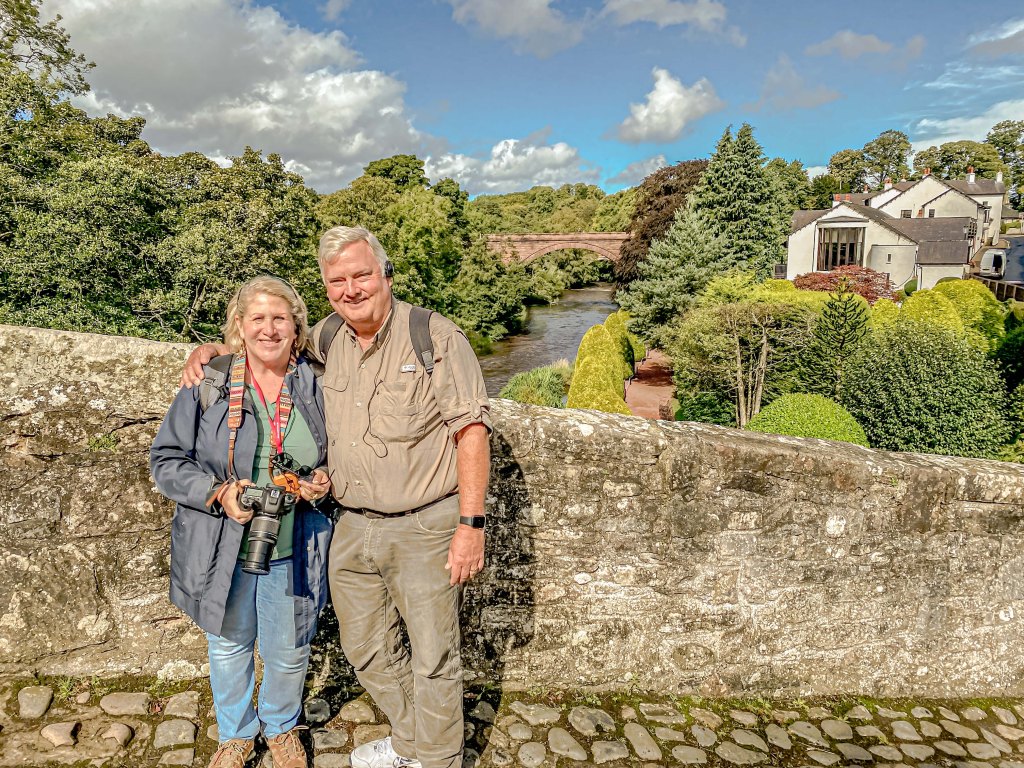


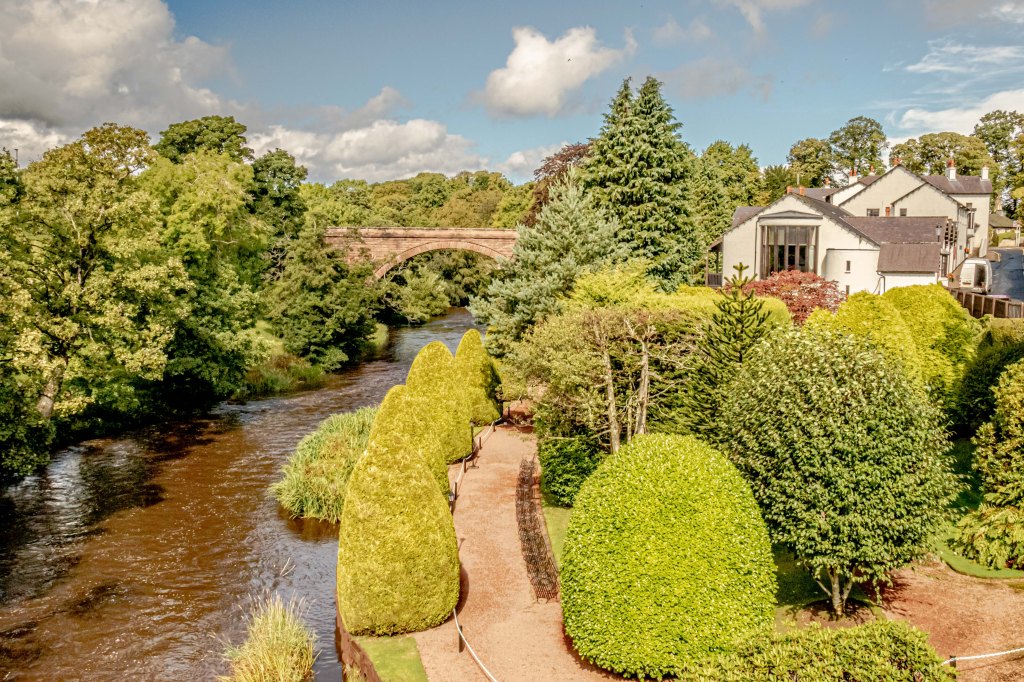


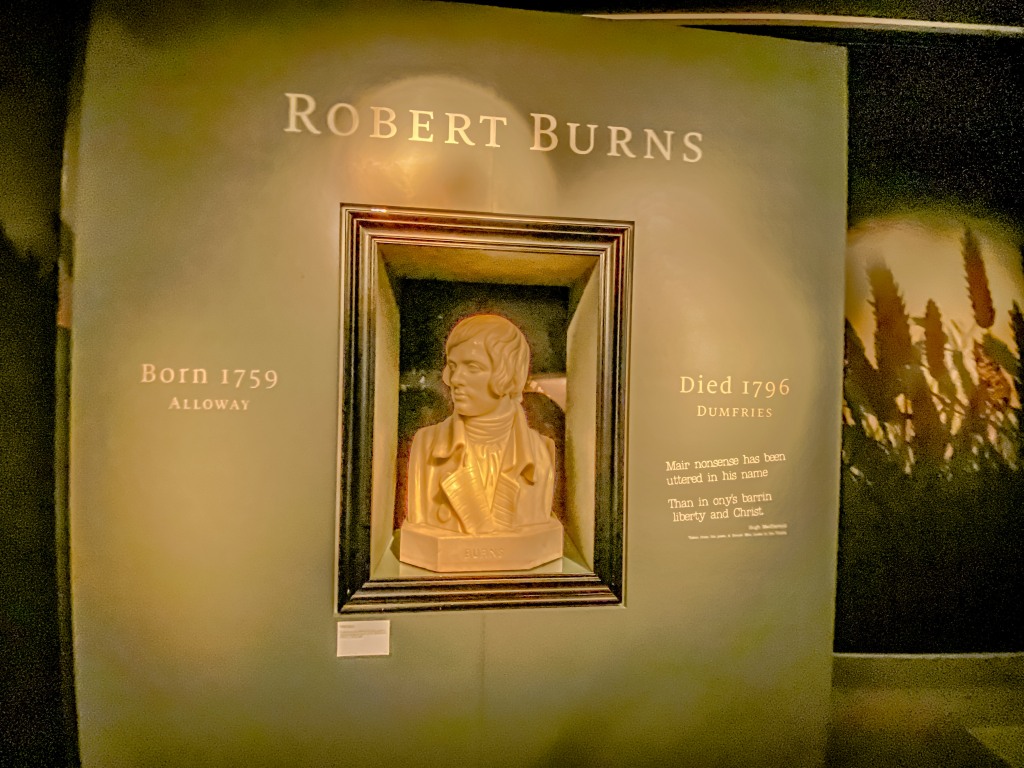

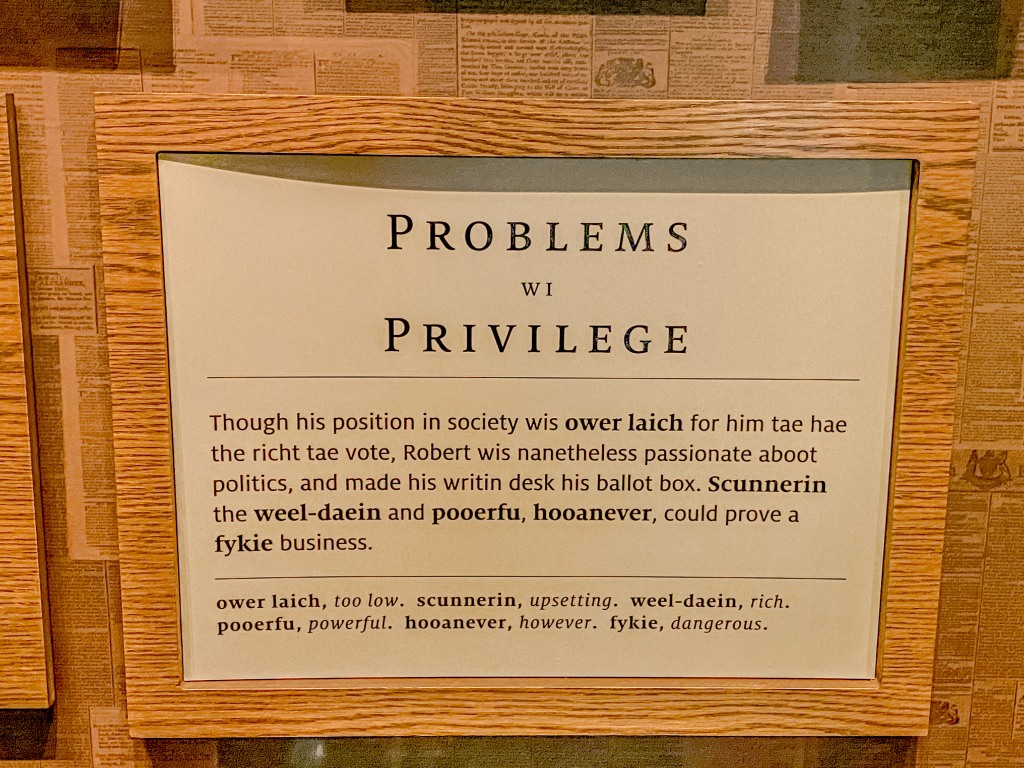
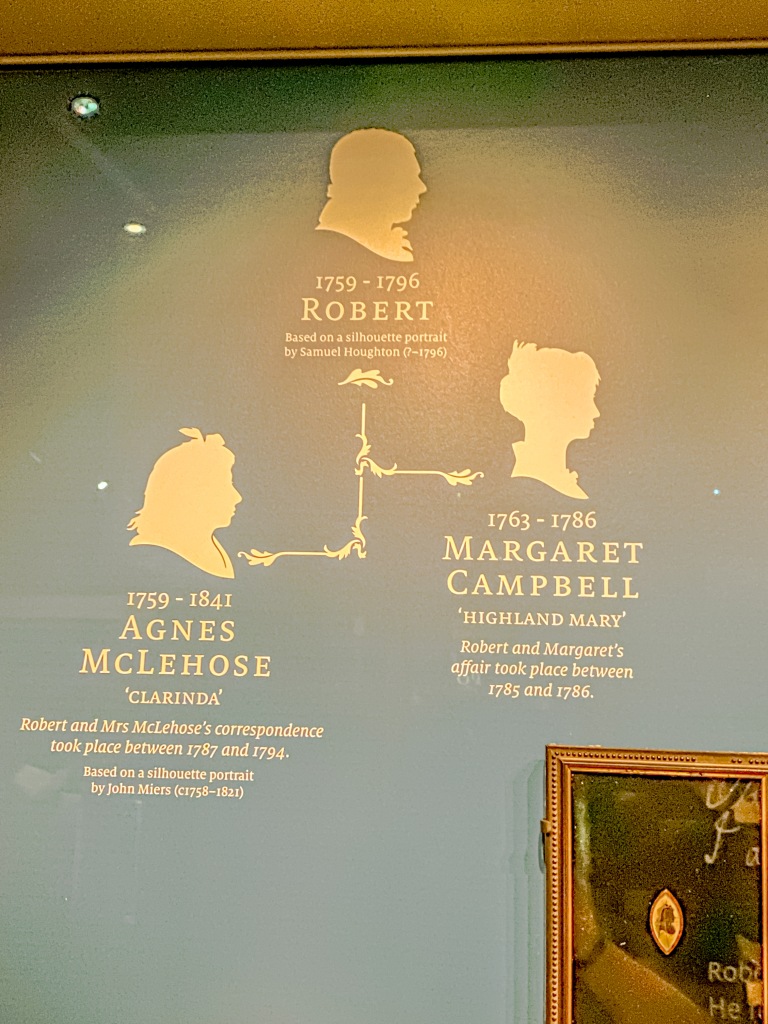

Jim and I participated in an optional walk along the River Clyde, where lots a redevelopment is going on. We also got to ride back to the hotel on Glasgow’s subway system which was very clean, easy, and efficient.


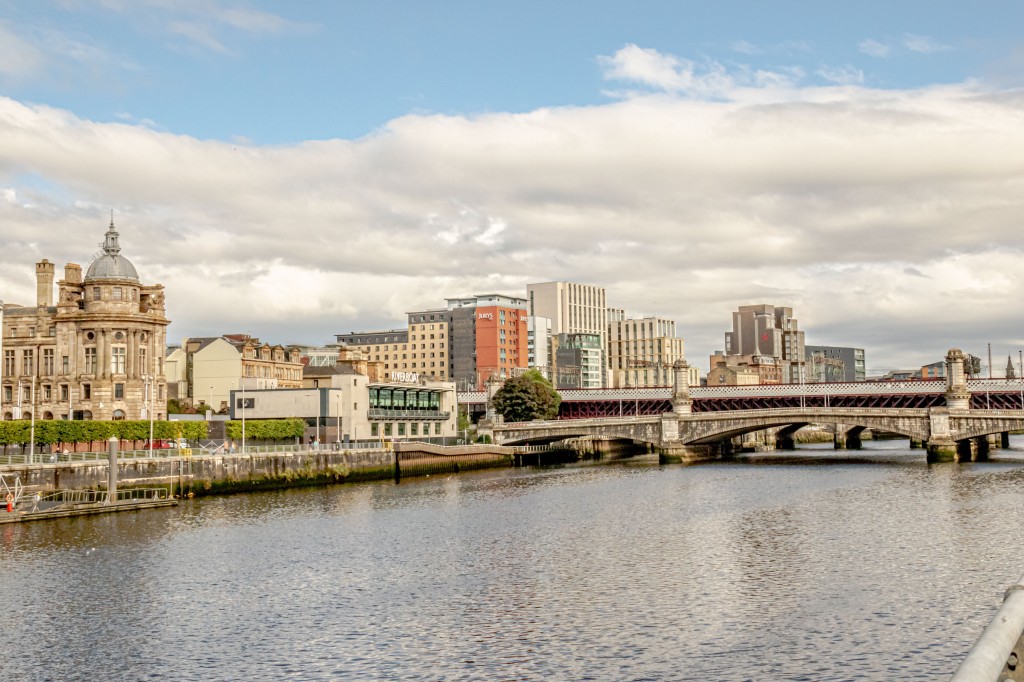


We finished the night with a home-hosted dinner at the home of Siobhan and Brendan Donnelly, and it was lovely! The Donnellys are parents to nine children (5 girls and 4 boys) ages 34-20, so it was quickly apparent that hosting an additional six strangers for dinner was nothing out of the ordinary for them! Siobhan made a deconstructed beef pie with puff pastry crust, which was just yummy. We even got to try one of the national sweets of Scotland, called “tablet”. I think it’s mainly made out of condensed milk and sugar, but it was so sweet, I can’t see how anyone would eat a whole piece of it! The evening passed way too fast with Siobhan and Brenden’s warm company, and all too soon, it was time to return to the hotel to pack up for our move to coastal Oban tomorrow. Stay tuned!

